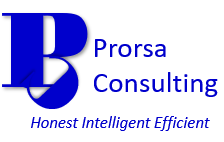6 Hot EHS Trends to Explore in 2024
By : Admin -

Staying informed of the latest environmental, health, and safety (EHS) trends can identify valuable improvement opportunities for enterprises of all sizes.
Compliance submissions were made by snail mail. Inspection photographs were dropped at the drugstore for development. Professionals visited the library to look up a federal statute or state code. All these activities were once commonplace EHS examples of compliance support activities. However, in the wake of the internet, digital cameras, and email, considered EHS trends in the near past, all these items have disappeared into relative obscurity.
Taking early advantage of the newest innovations in EHS can help organizations stay ahead of the competition, boost efficiency, and enhance overall environmental and safety compliance. Small and medium enterprises (SMEs) often stand to gain the most when they invest strategically in trending EHS innovations.
So, what EHS trends should SMEs note and evaluate for fit in 2024? Keep reading to discover six items that stand to make transformative contributions to the future of environmental, health, and safety management.
EHS Trends 1: Greater Efficiency through Technology
Efficiency improvement has long been heralded as an EHS example of robust management. With the increasing speed of new technology enhancements, it’s no surprise that organizations have begun adopting more tech to help control their environmental impacts and safeguard their workforces. From automating compliance reporting, using artificial intelligence (AI)-aided predictions, and completing audits and inspections via drones to wearable sensors to monitor work environments, the potential worth of technology in EHS is practically limitless.
The technological advancements in EHS have allowed even smaller businesses to collect real-time data for better decision-making and faster corrective actions. It has also helped professionals gain productivity as the time required to prepare, manage, and organize the paperwork associated with EHS programs lessens. Furthermore, with the advent of electronic EHS management systems, many routine tasks associated with program compliance can now be completed with little human intervention. This automation frees EHS professionals to focus on performance improvement rather than being overwhelmed by administrative aspects of the program.
SMEs can start small when introducing technology for efficiency gains in EHS. Utilize a task manager to build an in-house compliance calendar to ensure compliance items are completed on time. Invest in a centralized document management platform to streamline EHS recordkeeping. Additionally, consider digitizing your inspections, audits, and incident reporting through an in-house or external platform.
EHS Trends 2: The Move to ESG
Consumers have been moving to more sustainable, socially conscious brands for years. In response, larger, often publicly-held companies started implementing sustainability programs, which soon morphed into corporate social responsibility (CSR) initiatives. Environmental, social, and governance (ESG) standards were quickly established to help vet potential investments. In 2022, the U.S. Securities and Exchange Commission (SEC) issued rules to require climate disclosures as part of certain paperwork submitted by regulated companies.
In 2024, increased urgency to act in the face of climate change, disproportionate environmental impacts, and disenfranchisement of workers will strengthen customers’ desire to support enterprises investing in responsible business beyond conventional environmental, health, and safety. Organizations that commit to ESG will reap the associated benefits, including increased business reputation, better EHS compliance, efficiency gains, cost savings, and greater economic stability. These benefits demonstrate ESG’s strength as an EHS example that everyone should consider.
Small companies looking to incorporate CSR can start by procuring leadership approval through a written corporate policy or pledge. Furthermore, a gap analysis against the ESG framework should be completed to identify which operational areas need enhancement. Next, prioritize the identified gaps for completion and determine goals. Implement solid project management techniques, including appropriate budgeting, action item execution, progress tracking, and performance updates to stakeholders.

Image by StartupStockPhotos on Pixabay.com.
EHS Trends 3: Extending the Work Environment Beyond the Fenceline
COVID-19 relegated many workers to their home offices, in some cases permanently. The resistance of some employees to return has caused employers to reevaluate traditional work arrangements. Flex-time, hybrid, and full-time remote work have become common in our economy. How companies meet the challenges of this new situation will set an EHS example for years to come.
With this shift to work outside the workplace office or facility, employers must address environmental, health, and safety concerns in locations beyond the typical work environment. After all, many of the same hazards a worker may face at a company location also exist in a home office setting, such as ergonomic concerns, potential slip/trip/fall hazards, fire dangers, and electrical hazards. Employers must navigate these possible health and safety risks with their workers to ensure individuals are safe regardless of their work location.
SMEs with employees who work from home need to help these workers assess the potential hazards of their work environments. Conduct reviews of individuals’ home workspaces. Are workstations adequately configured to prevent musculoskeletal disorders (MSDs)? Is the space kept uncluttered, and are walkways clear? Are surge protectors utilized? After identifying gaps, it is time to assist workers in mitigating hazards. Helping employees address potential dangers in their home offices allows the company to fulfill its duty to provide a safe, healthy work environment.
EHS Trends 4: The Spotlight on Employee Well-Being
It may surprise you to know that 13% of injuries at work have fatigue as the primary contributing cause, according to the National Safety Council. Increased attention has also recently been given to employee mental health. Both these topics point to the heightened need to address worker well-being more systematically.
People are more productive, focused, and alert when their fitness is optimized, improving environmental, health, and safety outcomes. Factors like diet, exercise, stress management, sleep, and mental disease were once looked upon as outside the realm of the employer-employee relationship. Now, these topics are fair game when holistically managing workplace safety and health.
Small businesses desiring to enhance employee well-being may consider instituting a wellness program to assist workers in developing better life habits. Another excellent EHS example is employee assistance programs offering counseling sessions, stress reduction programs, nutritional information, weight management services, and sleep education to support individuals as they navigate the journey to better wellness.
Above all else, removing the stigma associated with mental health issues and disease should be paramount in any organization. Addressing such matters is a win for the employees, environmental, health, and safety, and the company. So, take the win by promoting open, honest communication without negativity.
EHS Trends 5: An Evolving Regulatory Landscape & Political Environment
The regulatory and political environment is cyclical in the U.S. Each political party seems diametrically opposed to one another regarding environmental, health, and safety issues. In 2024, rules and standards will continue to change, and policy norms may shift as the country prepares for a presidential election.
So, what are some significant things to watch? The Occupational Safety and Health Administration (OSHA) is updating requirements on injury data reporting in some high-hazard industries. The agency is also finalizing changes to its Hazard Communication Standard, which is expected early in 2024. A heat illness prevention rule is also in the works. In addition, an unofficial version of OSHA’s proposed Emergency Response standard is currently available for the public to review. The official version is expected to be released in the Federal Register in January 2024.
On the environmental side, efforts to update the Greenhouse Gas Reporting rule and further regulation of per- and polyfluoroalkyl substances (PFAS) are progressing. Additionally, the Environmental Protection Agency (EPA) will continue prioritizing climate change initiatives and environmental justice, as evidenced by their FY2024 budgeting activities.
As the regulatory and political landscape changes, smaller organizations must stay informed to determine new or altered requirements. Some EHS examples to accomplish this include joining agency regulatory listservs, purchasing regulatory subscription services, subscribing to trade association publications, and consulting legal and environmental blogs and white papers to keep up to date with the latest EHS trends regarding applicable rules and political developments.

Image by Brett Jordan on Unsplash.com.
EHS Trends 6: A Shift from Programs to Systems
In an economy that rewards results, it’s no wonder that companies are constantly innovating to be more efficient, productive, and lean. One shift among our EHS trends is the move from traditional command-and-control environmental, health, and safety programs to collaborative EHS management systems. Taking the systematic approach allows facilities to uncover problems faster, be more agile to respond quickly, and increase the overall effectiveness of their EHS efforts.
Increasingly, organizations are taking advantage of electronic EHS management system platforms to handle routine functions like data collection, analysis, and reporting, as we discussed earlier. However, more and more facilities also recognize the benefit of implementing a standards-based management approach like the International Standards Organization (ISO) or OSHA’s Voluntary Protection Program (VPP). In both cases, sites can improve performance, realize cost savings, and see gains in productivity and workplace morale.
SMEs should thoroughly evaluate their goals and feasibility before deciding to implement an electronic or standards-based system for EHS management. Look at workforce size, budgetary constraints, technological capabilities, desired performance, and strategic vision alignment to ensure implementing an environmental, health, and safety system will be worth the resource allocation necessary for success. Moreover, small businesses should consider a piecemeal approach, executing mini updates and building a comprehensive EHS management system over time. Doing so will make this strategy more workable.
Other Posts Related to EHS Trends You May Like
Worker Fatigue Dangers: What’s Your Company’s Plan to Prevent the Worst Outcomes?
The Power of Corporate Social Responsibility: Why It’s Essential for Businesses Today
Final Thoughts on EHS Trends for 2024
Innovation, timing, and differentiation remain the goalposts to beat your competition. Exploring the EHS trends in this post can assist SMEs in attaining their overall business goals. Environmental, health, and safety shouldn’t be an afterthought when the benefits of solid performance are so invaluable. Furthermore, there are many EHS examples to pursue for success.
We encourage your feedback on this blog. Like, comment, or share this post if you find it helpful. You can also provide us with feedback via our Contact Us page.
Don’t forget to follow Prorsa Consulting on LinkedIn, Pinterest, and Twitter.
Are you struggling to identify requirements and build a robust, compliant environmental, health, and safety strategy? Are you ready to gain clarity, reduce risk, achieve compliance, and boost your competitiveness? If so, it’s time to consider completing our free, no-obligation gap analysis. You’ll receive a high-level overview of areas to address for better EHS compliance. Additionally, we will introduce you to some tools to help fill any gaps. This assessment is a no-brainer . . . schedule your complimentary gap analysis discovery call here.






